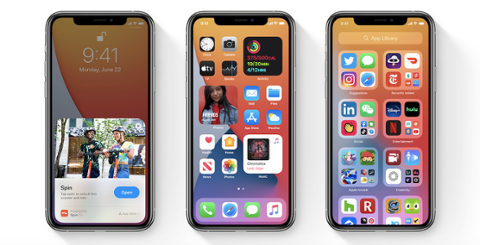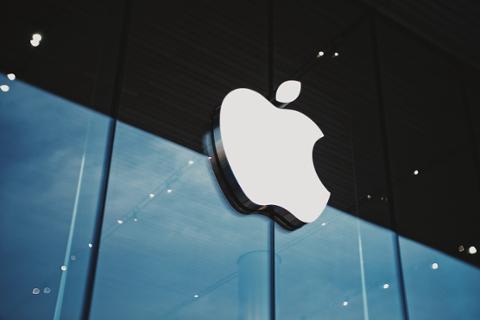Over the past few years, Apple has done interesting things with the iPad. First, the company’s software engineers split iPadOS from iOS, creating a device-centric operating system. Then came the iPad Pro, a spec-heavy iPad aimed at professionals such as designers; it’s clear that Apple wants the iPad to become many folks’ primary platform for their daily workflow.
The 2021 iPad Pro doubles down on the ‘pro’ angle by adding the same M1 chipset Apple tucked inside new Macs, including the new iMac. iPad also has its own keyboard folio and a stylus, all in the name of productivity. But where are the truly “pro” apps? More to the point, why does iPad have the M1 chipset if not to offer desktop-class apps?
Some conflate the iPadOS/macOS issue by asserting Apple should simply merge both platforms, thanks in large part to shared hardware such as the M1.
But in a recent interview with Independent, Apple Vice President of Hardware Engineering John Ternus said, “We’re pushing to make the best Mac we can make. We’re pushing to make the best iPad we can make. We’re just going to keep making them better, and we’re not going to get all caught up in theories around merging [platforms] or anything like that.” That’s a strong signal that macOS and iPadOS won’t merge anytime soon.
Greg Joswiak, Apple Vice President of Marketing, added, “We’re quite proud of the fact that we work really, really hard to create the best products in their respective categories.”
Given how Apple keeps pushing the iPad as a professional-grade device, can we expect Xcode and other professional tools for technologists to eventually arrive for iPadOS? The experts we consulted seemed pessimistic about that outcome, at least in the short term.
Author and iOS instructor Vardhan Agrawal tells Dice, “Apple should probably stay away from including developer tools like Xcode on the iPad because, despite its Mac-level chipset and performance, it exists to fill a space between the Mac and the iPhone in their ecosystem. That space is not where commercial-grade developer tools belong.”
Agrawal adds: “If anything, iPad users should be able to do basic sandboxing, which is available through third-party text editors that handle code—and for Swift, there's Swift Playgrounds to handle that niche area.”
Swift Playgrounds is meant as a tool for learning the Swift programming language, but it’s also a lightweight code editor. It has the same playground feature as Xcode, something Apple was proud to bring to iPad. In an interview with TechCrunch, Ternus said: “Contrary to some people’s beliefs, we’re never thinking about what we should not do on an iPad because we don’t want to encroach on Mac, or vice versa.”
Apple’s disregard of “hard borders” between Mac and iPad are, at times, sensible; even though Swift Playgrounds’ editor is nowhere near as robust as Xcode, it offers features for building and running code, as well as code completion, and catches buggy code in the same way Xcode on Mac will. If you need to piece together some code on the go, Swift Playgrounds’ code editor suffices.
Harriet Chan, co-founder at Cocofinder, suggests that full developer tools could eventually arrive—with some modifications on Apple’s part: “The main reason Apple hasn't made Xcode for iPad yet is the issues with the RAM usage, but there are solutions for certain things, they come with a performance cost. Presumably, it would need to do so in a much more sandboxed way than we're used to seeing on Mac.”
Miranda Yan, co-founder of VinPit, echoes that the idea that the iPad isn’t quite desktop-class, preventing the arrival of full-on Xcode on iPadOS: “iPads are designed for light use like basic entertainment, web browsing, and social media. IDEs require serious processing power. Depending on the complexity of the program being run, the iPad would buckle under the pressure and the battery would run dry too quickly. This could change in the future when iPads improve technology-wise. We’re getting there. The newest iPad is seriously powerful.”
Yan notes she would prefer VSCode for iPad (“It’s always a pain point that I can’t use Visual Studio on my iPad without some seriously time-consuming workarounds,” she notes) which hints at a different issue: monetization of pro apps.
iPad Pro Tools and the App Store
Many IDEs, including VSCode, charge extra for third-party features. VSCode has a massive, robust network of extensions in a “store” feature within the IDE itself. Many are free to download and use, but some are paid extensions. That makes extensibility another issue when considering whether to bring pro development tools to iPadOS.
Paid features within apps must be done via apps built for Apple platforms. Over the years, this has rubbed many the wrong way, including Netflix, Spotify, and now Fortnite-maker Epic. Apple and Epic are headed to court this month in a serious battle over how much control Apple should be allowed to exert over in-app monetization. The ultimate outcome (expect appeals) will have a lasting effect on the App Store and developers’ ability to monetize their work.
Apple won’t willingly give up all that App Store cash; it made nearly $90 billion last quarter and has dug its heels in about the 30 percent cut it takes for app purchases and in-app sales. Apple has also come under fire for not applying its rules evenly, and allowing an app like VSCode to run an in-app store while taking Epic to court would draw tons of ire from developers and other professionals.
For the Mac, the dominance of the App Store isn’t a problem; nor is monetization. You’re able to download apps like Sketch or VSCode from the web. So long as those apps are built to work on a Mac, you can use them. “If, for some reason, Apple decided to make [pro-level apps like Xcode] for iPad, it wouldn't affect developers much, neither in terms of monetizing their current apps nor for developing new apps,” Argawal says. “Those that use a computer for programming are very unlikely to switch.”
There’s a lot of nuance to the discussion of pro apps for iPad. The new iPad Pro can likely handle a lighter version of Xcode (pro-favorite Photoshop has a lighter-weight iPadOS version, for example) or projects under a certain megabyte threshold, but—as our experts pointed out—it’s still no desktop computer. And as simple as porting iPad apps to the Mac is, the reverse is not true.
For the moment, pro apps on the iPad are all about concessions. Photoshop for iPadOS is a limited version of its desktop tooling; Coda has been discontinued and replaced by the Mac-only Nova; Swift Playgrounds is not a substitute for Xcode. Speaking to TechCrunch, Joswiak added: “The majority of our Mac customers have an iPad. That’s an awesome thing. They don’t have it because they’re replacing their Mac, it’s because they use the right tool at the right time.”
In other words, while iPadOS could eventually see more lightweight pro tools for developers, it seems unlikely that full versions will arrive in the App Store anytime soon—and when they do, it could spark a new round of fights around monetization and sandboxing.



